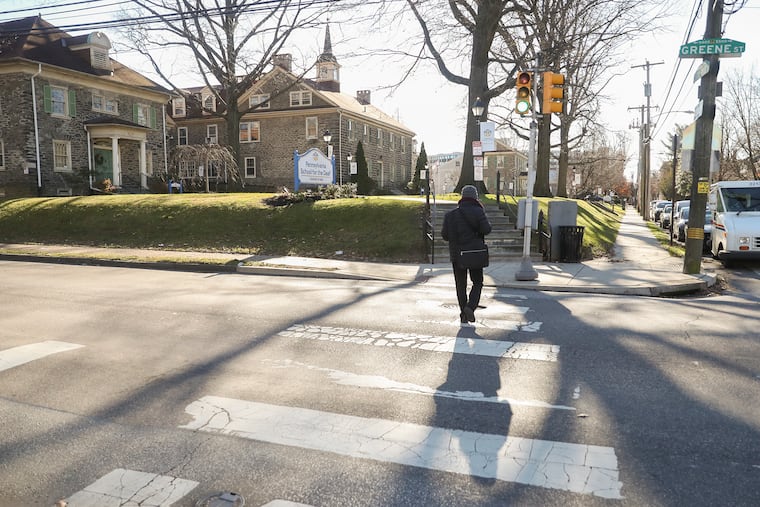Changing the timing of traffic lights in the city would make it safer for disabled pedestrians
Synchronizing and changing the timing of traffic lights can make the city safer for aging residents and those with disabilities, writes David W. Wannop, a longtime Philly resident who is blind.

Philadelphia has had a rash of recent hit-and-run accidents. Other sorts of pedestrian accidents have been more numerous. We have had conflicts between bicyclists and people in motor vehicles. People with disabilities have also had concerns about walking the streets.
One solution has not really been considered, and that is the timing and lengthening of light cycles at intersections.
I frequently go to Montreal. I’ve been there 10 times. The lights there are timed and sequenced and prioritize pedestrian safety. As a driver, you are a lot less likely to be stopped at a traffic light, but when you are, you are going to wait for a longer period of time. This creates a traffic flow where the cars do not become as jammed together. It creates a flow that keeps traffic moving evenly, which allows you to get across town faster.
Additionally, it allows pedestrians the ability to wave the turning vehicles through their intersection, and then cross. In Philadelphia, we often have people using walkers, canes, carts, and wheelchairs trying to rush across the intersection. They are trying to do this as cars are intending to turn. This causes dangerous situations. Countless accidents and injuries could be avoided by focusing on traffic lights — the timing, making them synchronized, and making the light cycle much longer.
Additionally, longer lights at the intersections make it easier for buses that stop at the corner to pick up and drop off passengers. This also prevents the stop-and-go gridlock that devils Philadelphia.
Further, the people who have been debating the safety on our streets have not considered other factors impacting those with disabilities, such as the quiet car conundrum. At one time, cars were almost as loud when they were idling as they were when they were moving. Hybrid cars and electric cars are not this way. It’s making it a lot harder for people to hear the traffic around them. This is particularly dangerous for a blind person, such as myself.
However, even people who can see have been suddenly surprised by a vehicle turning toward them that they were not aware of until the last second.
» READ MORE: Slow down and help make Philly streets safer | Editorial
Our short traffic light cycles add to this problem. If people were waiting at the crosswalk and waiting at the traffic light for a longer period of time, they would become more aware of their surroundings.
Blind people travel by listening to the direction the vehicles are moving. At one time, I might not even break my stride to cross the street because I could hear all the vehicles clearly, and I could hear that I had the light in my favor. However, I have had significant hearing loss over the last few years. As the cars were getting quieter, my hearing was getting less dependable. This has meant that I may stand through a couple of light cycles to cross the street, waiting for the best sound cue.
» READ MORE: I’m tired of feeling unsafe as a pedestrian, and waiting for the city to act | Opinion
Hearing loss exacerbates the pedestrian safety problem, and when you add distracted driving from cell phones and dashboard digital displays, you have a guarantee of difficulties. If the traffic lights were longer, drivers would be forced to really stop and pay attention. This would increase safety for pedestrians.
As more and more city residents forgo even owning a car, and as our population ages, a few extra seconds to get across the street could be a matter of great importance, or even life and death.
I can’t wait to get back to Montreal, where I have an easy time crossing the street without fear or concern. As for Philadelphia — I recommend navigating it with heightened caution.
David W. Wannop is a former syndicated journalist and concert promoter based in Philadelphia.